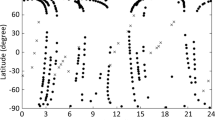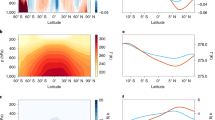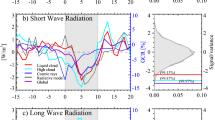Abstract
IT seems to me that in NATURE of January 7 (p. 281) Mr. Dines successfully defends his simple, compact, but extremely efficient apparatus from the suspicions that have been levelled at it. The tests of the instrument before and after use show that it truly records the temperatures and pressures to which it is reduced. Mr. Dines is therefore entitled to call for adequate discussion of the most marked outcome of the experiments—the fact that in nearly all cases the minimum reading of temperature is reached long before the maximum height in the ascent, and long after in the descent. To suggest that the thermometer or the barometer may be slightly out is really to evade the problem.
This is a preview of subscription content, access via your institution
Access options
Subscribe to this journal
Receive 51 print issues and online access
$199.00 per year
only $3.90 per issue
Buy this article
- Purchase on Springer Link
- Instant access to full article PDF
Prices may be subject to local taxes which are calculated during checkout
Similar content being viewed by others
Author information
Authors and Affiliations
Rights and permissions
About this article
Cite this article
HUGHES, R. The Isothermal Layer of the Atmosphere. Nature 79, 340–341 (1909). https://doi.org/10.1038/079340c0
Issue Date:
DOI: https://doi.org/10.1038/079340c0
Comments
By submitting a comment you agree to abide by our Terms and Community Guidelines. If you find something abusive or that does not comply with our terms or guidelines please flag it as inappropriate.



